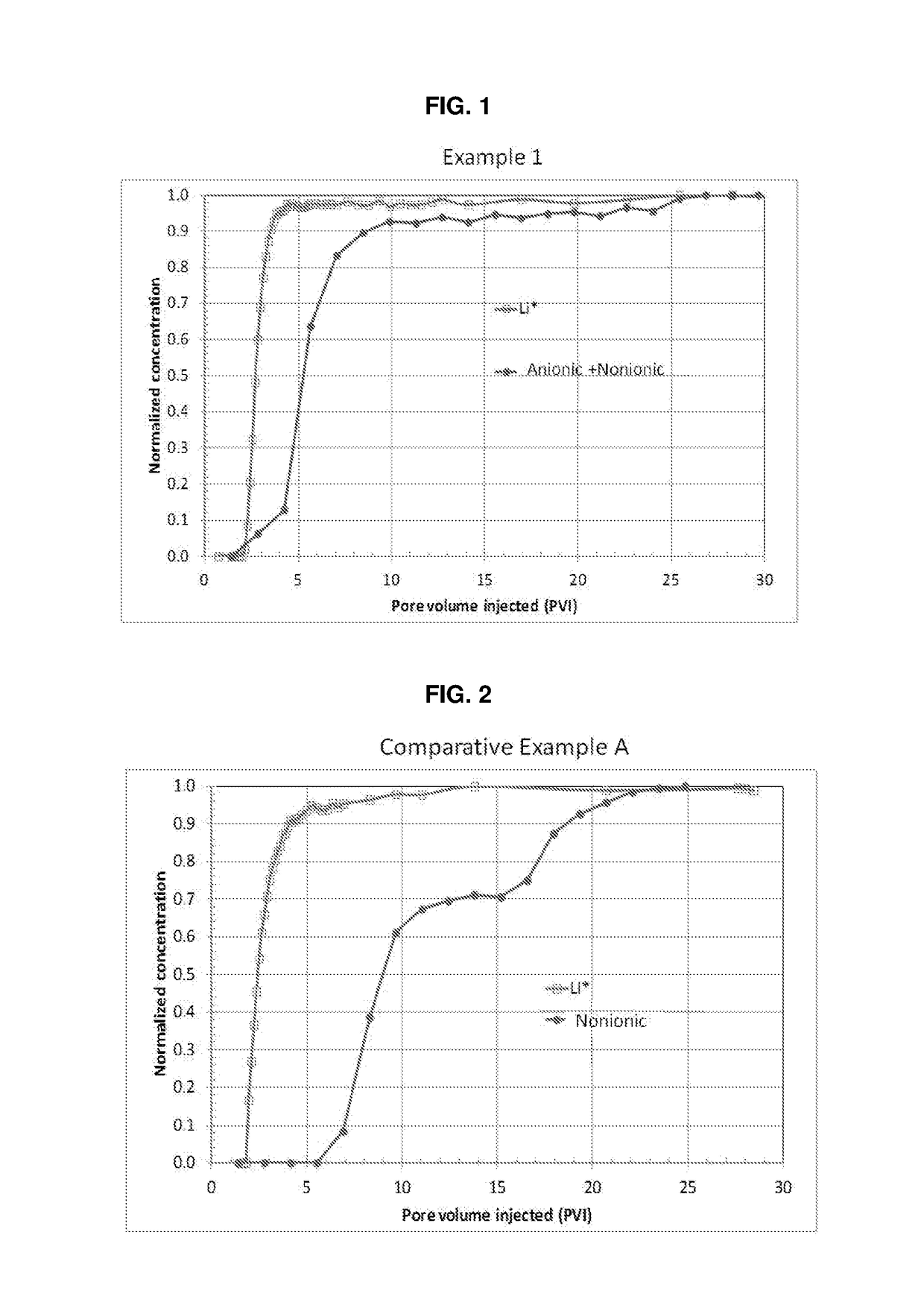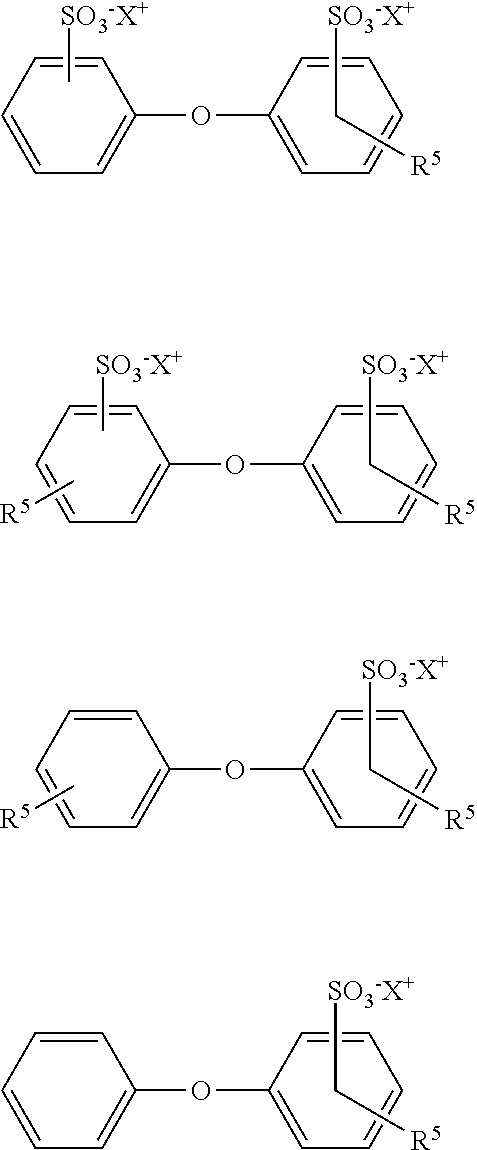Co-surfactant foam-forming composition for enhanced oil recovery
- Summary
- Abstract
- Description
- Claims
- Application Information
AI Technical Summary
Benefits of technology
Problems solved by technology
Method used
Image
Examples
examples
[0049]The following examples are given to illustrate, but not limit, the scope of this invention. Unless otherwise indicated, all parts and percentages are by weight. Weight percent is the percentage of one compound included in a total mixture, based on weight. The weight percent can be determined by dividing the weight of one component by the total weight of the mixture and then multiplying by 100. Unless otherwise specified, all instruments and chemicals used are commercially available.
[0050]Dynamic adsorption experiments to evaluate the adsorption behavior of the surfactant formulations are performed in a Chandler Formation Response Tester (FRT 6100) core flood set up. Berea sandstone cores 6 inch in length and 1.5 inch in diameter are used. The cores are held inside a rubber sleeve which is then inserted into a Hassler-type core holder. A confining pressure, in excess of 500 psi over the core line pressure, is applied externally on the sleeve to keep the cores locked in place. A...
PUM
 Login to View More
Login to View More Abstract
Description
Claims
Application Information
 Login to View More
Login to View More - R&D
- Intellectual Property
- Life Sciences
- Materials
- Tech Scout
- Unparalleled Data Quality
- Higher Quality Content
- 60% Fewer Hallucinations
Browse by: Latest US Patents, China's latest patents, Technical Efficacy Thesaurus, Application Domain, Technology Topic, Popular Technical Reports.
© 2025 PatSnap. All rights reserved.Legal|Privacy policy|Modern Slavery Act Transparency Statement|Sitemap|About US| Contact US: help@patsnap.com



